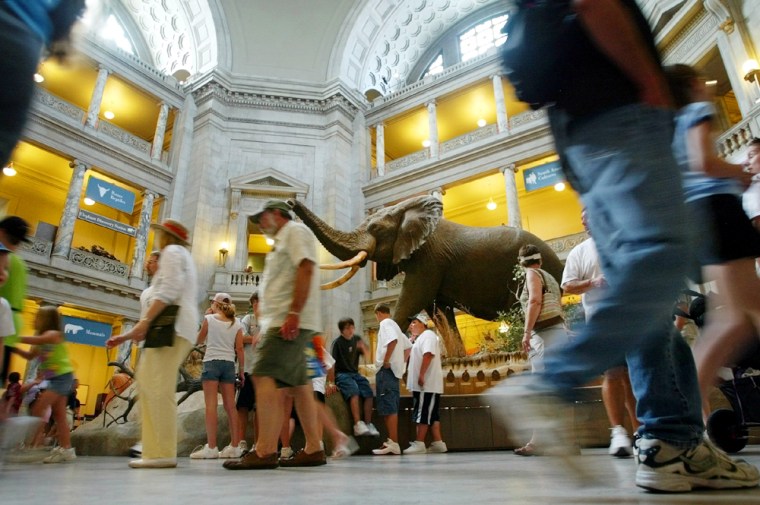"From precious seeds these men have sown, Gigantic plants and trees have grown," wrote poet Solomon G. Brown of the early history of the Smithsonian Institution and the developments and agencies it had given birth to.
Brown, the first black employee of the Smithsonian, was remembered Tuesday as the National Museum of Natural History marked the 100th anniversary of the groundbreaking for its building.
Brown took part in that June 15, 1904 event, happy for the growing institution yet lamenting the loss of stately old trees along the national mall that had to be felled for the museum.
Christian T. Samper, director of the Natural History Museum, recalled those concerns Tuesday and broke ground again on the museum lawn to plant a cedar of Lebanon in Brown's memory.
"As the Smithsonian's first African-American employee, Solomon G. Brown was keenly aware that history was being made. As a self-educated scientist and naturalist, he was proud of the important role the Smithsonian played in both his own life and that of this young nation," Samper said.
Sharing the honors were Clara Ellis Payne and her son, Darryl Brandon Payne, of New York, who are descendants of Brown.
The Natural History Museum is now one of the most popular attractions in Washington, featuring a massive elephant called Henry in its rotunda, and displays ranging from the fossils of dinosaurs to the Hope Diamond to baseball's place in America.
It also houses the largest museum research staff in the world, Samper noted, focusing on topics from anthropology to zoology with botany, entomology, mineral sciences and paleobiology in between.
Brown, born in 1829, joined the Smithsonian in 1852 and remained in service there until he retired in 1906. He died that same year.
Brown began as a laborer and rose to clerk and later naturalist at the museum. While Brown had not been able to attend school as a youngster, he went to work for the city's assistant postmaster, Lambert Tree.
In 1844, he got a job at the post office and was then detailed to assist Joseph Henry of the Smithsonian, Samuel F. B. Morse, and Alfred Vail in setting up the first telegraph system between Washington and Baltimore.
While at the Smithsonian, Brown became knowledgeable in natural history and became well known for his lectures at scientific societies in Washington, Alexandria, Va. and Baltimore.
Brown was also a poet, and a selection of his work has been published by the Anacostia Museum in Washington, including one read at the ceremony Tuesday celebrating the Smithsonian and its giving birth to such organizations as the current National Weather Service and Fish and Wildlife Service.
